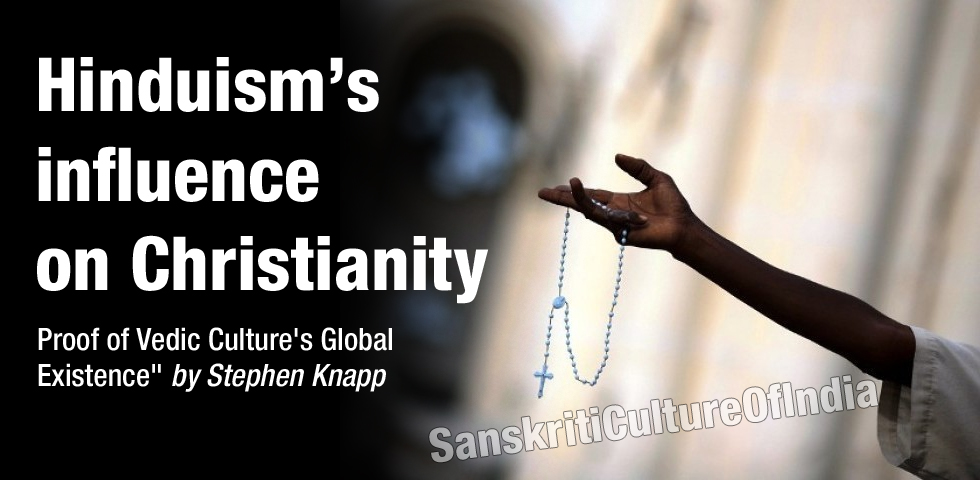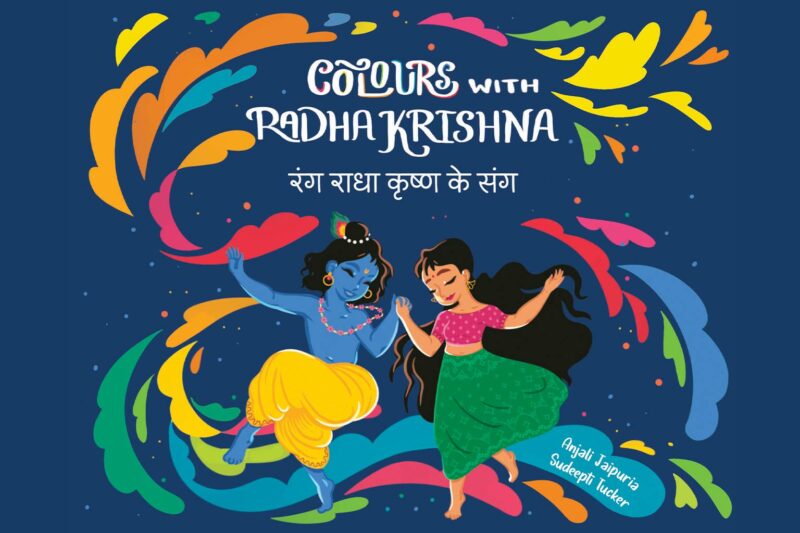You may find it surprising that much of Christianity originated from India. Indeed, over the centuries, numerous historians and sages have pointed out that not only has Hinduism had a predominant influence on Christianity, but that many of the Christian rites could be directly borrowed from Hindu (Vedic) India.
French historian Alain Danielou had noticed as early as 1950 that “a great number of events which surround the birth of Christ – as it is related in the Gospels – strangely reminded us of Buddha’s and Krishna’s legends.” Danielou quotes as examples the structure of the Christian Church, which resembles that of the Buddhist Chaitya; the rigorous asceticism of certain early Christian sects, which reminds one of the asceticism of Jain and Buddhist saints; the veneration of relics, the usage of holy water, which is an Indian practice, and the word “Amen,” which comes from the Hindu (Sanskrit) “OM.”
Another historian, Belgium’s Konraad Elst, also remarks “that many early Christian saints, such as Hippolytus of Rome, possessed an intimate knowledge of Brahmanism.” Elst even quotes the famous Saint Augustine who wrote: “We never cease to look towards India, where many things are proposed to our admiration.”
“Unfortunately”, remarks American Indianist David Frawley, “from the second century onward, Christian leaders decided to break away from the Hindu influence and show that Christianity only started with the birth of Christ.” Hence, many later saints began branding Brahmins as “heretics,” and Saint Gregory set a future trend by publicly destroying the “pagan” idols of the Hindus.
Great Indian sages, such as Sri Aurobindo and Sri Sri Ravi Shankar, the founder of the Art of Living, have often remarked that the stories recounting how Jesus came to India to be initiated are probably true. Sri Sri Ravi Shankar notes, for instance, that Jesus sometimes wore an orange robe, the Hindu symbol of renunciation of the world, which was not a usual practice in Judaism. “In the same way,” he continues, “the worshiping of Virgin Mary in Catholicism is probably borrowed from the Hindu cult of Devi.” Bells too, which cannot be found today in Synagogues, the surviving form of Judaism, are used in church-and we all know their importance in Buddhism and Hinduism for thousands of years, even up to the present day.
There are many other similarities between Hinduism and Christianity, including the use of incense, sacred bread (prasadam), the different altars around churches (which recall the manifold deities in their niches inside Hindu temples), reciting prayers on the rosary (Vedic japamala), the Christian Trinity (the ancient Vedic trinity of Brahma, Vishnu and Shiva as the creator, maintainer and destroyer respectively, as well as Lord Krishna as the Supreme Lord, the all-pervading Brahman as the holy ghost, and Paramatma as the expansion or son of the Lord), Christian processions, and the use of the sign of the cross (anganyasa), and so many others.
In fact, Hinduism’s pervading influence seems to go much earlier than Christianity. American mathematician, A. Seindenberg, has, for example, shown that the Shulbasutras, the ancient Vedic science of mathematics, constitute the source of mathematics in the antique world of Babylon to Greece: “The arithmetic equations of the Shulbasutras were used in the observation of the triangle by the Babylonians as well as in the edification of Egyptian pyramids, in particular the funeral altar in the form of pyramid known in the Vedic world as smasana-cit.”
In astronomy too, the “Indus” (from the valley of the Indus) have left a universal legacy, determining for instance the dates of solstices, as noted by 18th century French astronomer Jean Sylvain Bailly: “The movement of stars which was calculated by Hindus 4,500 years ago, does not differ even by a minute from the tables which we are using today.” And he concludes: “The Hindu systems of astronomy are much more ancient than those of the Egyptians-even the Jews derive from the Hindus their knowledge.”
There is also no doubt that the Greeks heavily borrowed from the “Indus.” Danielou notes that the Greek cult of Dionysus, which later became Bacchus with the Romans, is a branch of Shaivism: “Greeks spoke of India as the sacred territory of Dionysus, and even historians of Alexander the Great identified the Indian Shiva with Dionysus and mention the dates and legends of the Puranas.” French philosopher and Le Monde journalist Jean-Paul Droit recently wrote in his book, The Forgetfulness of India, that “the Greeks loved so much Indian philosophy that Demetrios Galianos had even translated the Bhagavad-gita.”
Many Western and Christian historians have tried to nullify this India influence on Christians and ancient Greece by saying that it is the West through the Aryan invasion, and later the onslaught of Alexander the Great of India, which influenced Indian astronomy, mathematics, architecture, philosophy-and not vice versa. But new archeological and linguistic discoveries have proved that there never was an Aryan invasion and that there is a continuity from the ancient Vedic civilization to the Saraswati culture.
The Vedas, for instance, which constitute the soul of present day Hinduism, have not been composed in 1500 B.C., as Max Muller arbitrarily decided, but may go back to 7000 years before Christ, giving Hinduism plenty of time to influence Christianity and older civilizations which preceded Christianity.
Thus, we should be aware of and point out the close links which exist between Christianity and Hinduism (ancient Vedic culture), which bind them into a sacred brotherhood. Conscientious Christian and Western scholars can realize how the world humanity’s basic culture is Vedic through proper research.











